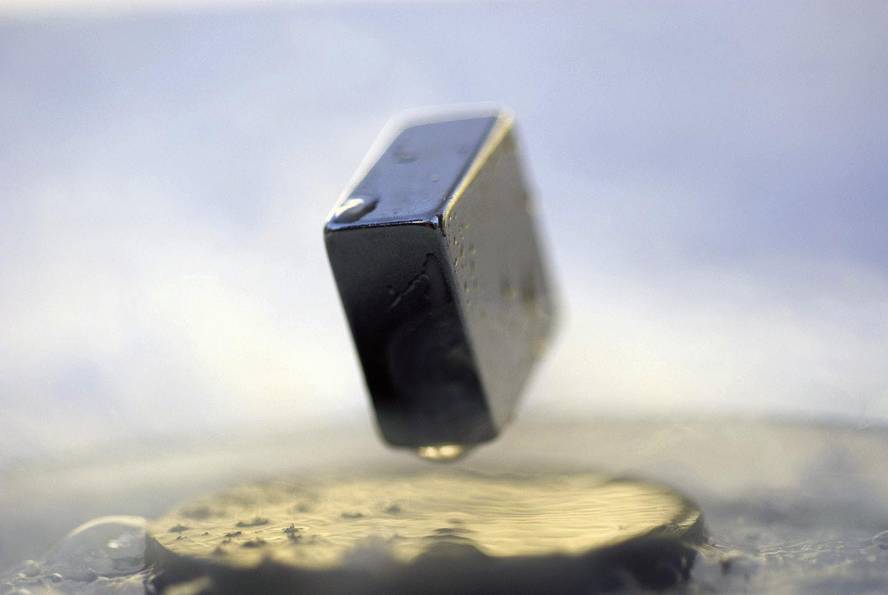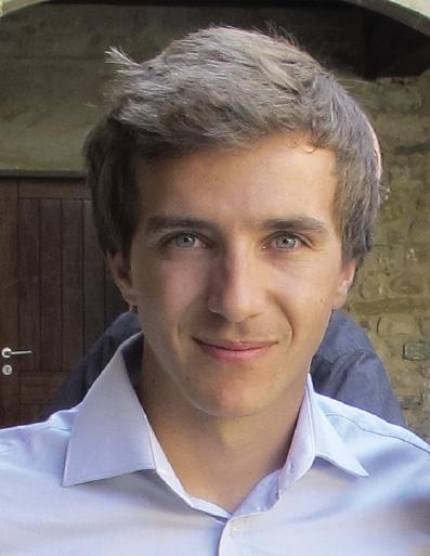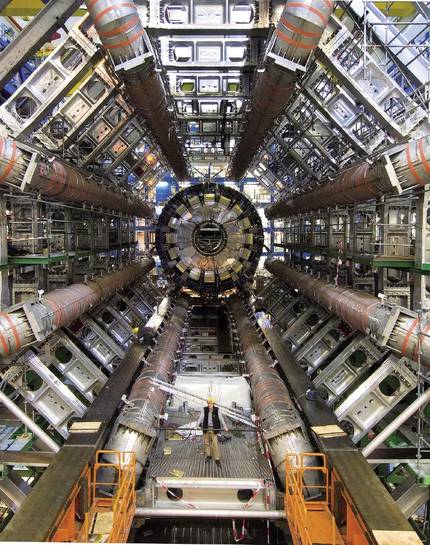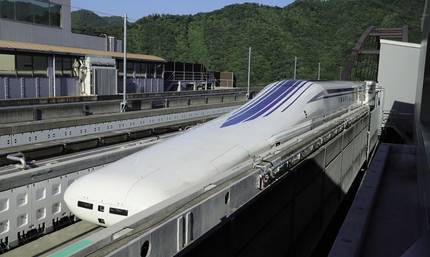Superconductivity at the top

At the end of June came the missing test, proof that it was an authentic superconductivity. This confirms that they reached superconductivity at the highest temperature in history, almost 40 degrees higher than the highest previous. After 30 years of tempering, the subject of superconductivity was again incandescent.
The topic began to warm up in December last year, when three Max Planck researchers published in arXiv the high-pressure hydrogen sulfide, superconductor in 190 K (-83 °C). It was the biggest finding since in 1986 superconductors were discovered at high temperature. The scientific community took the news with prudence. In that first experiment the disappearance of electrical resistance was discovered, but they could not demonstrate the second characteristic of superconductivity: the expulsion of a magnetic field (Meissner effect).
Max Planck's researchers joined two other physicists at Mainz University to prepare a second experiment to observe the Meissner effect. And the result was in June: The Meissner effect was also there. In this case, the superconductivity was obtained at 203 K (-70ºC). In addition, they left their sample to a Japanese group that also confirmed their superconductivity.
The results have now been published in the journal Nature, which confirms that the evidence is solid. However, the theoretical physicists began to understand what happened in that experiment in the month of December, nothing more to draw the results. One of them was the Donostiarra Ion Errea Lope. “Superconductivity and high pressure have always been my subjects,” says Errea. He did his thesis and subsequently developed a computational method at the University Pierre of Paris and Marie Curie, which now comes very well to explain the experiment of the Max Planck: “When we saw the results, we thought we had a good theoretical tool to deal with this problem, and it has been so.” Physical Review Letters published her work in April.
Great challenge Great challenge
“One of the great challenges we have in Physics”, for Errea, is superconductivity. And the challenge is twofold: on the one hand, achieving the ambient temperature is a practical challenge and, on the other, a theoretical challenge, understanding the superconductivity well. “The theoretical challenge is enormous. Imagine that it has been more than a hundred years since it was found and we still have no complete explanation. That shows how complex it is, it’s something very special.”

In 1911 the Dutchman Heike Kamerlingh Onnes first discovered this special phenomenon. Three years earlier, he managed to liquefy the helium, which opened the doors of low temperature physics. During the experiments with helium it was surprised to see that by putting mercury at 4.19 K (-268.96 °C) the electrical resistance dropped almost to zero suddenly. And when going up to 4,20K the resistance of the material was shown again. Onnes called him Supraeroseasonality and two years later he received the Nobel Prize in Physics.
It took almost half a century to find an explanation for this surprising phenomenon. It is clear that it is not easy. Physicists know the system components well: “In the Coulombian interaction between electrons and some ions (atomic nuclei), it is nothing more,” explains Errea. But the truth is that they are many electrons and ions. “In one gram of matter there are about 10 23 atoms. There are so many electrons and ions that very special collective phenomena occur. To explain these phenomena, we must describe the interaction of many electrons and ions, which is very difficult. They are rare phenomena, which are not expected, and superconductivity is the greatest exponent of this complexity.”
John Bardenen, Leon Cooper and Robert Schrieffer explained in 1957 the BCS theory. And in 1972 he received the Nobel Prize in Physics. “The BCS theory is very accepted. It explains well the mercury, aluminum and superconductivity observed in this type of metals”, explains Errea. “The theory is based on electro-phonon interaction. The fonones are quantum of the oscillations of atoms, that is, in short, the energy of the vibrations of atoms (which never stand). The theory BCS says that through electrophonon interaction can form pairs of electrons.” Electrons in themselves are compared to each other due to coulombian (negative charge), but the influence of the fonones can cause the electrons to attract and form pairs: Cooper pairs. And Cooper pairs can transport electric current without any loss, that is, without resistance.
“The question is that this theory has been very useful for understanding the superconductivity of many metals, but the high temperature superconductors that were discovered in the 1980s can’t be explained in any way through this theory,” explains Errea.
In 1986, J. Georg Bednorz and K. Alex. The docks found first high temperature superconductors (35K, -238ºC). The following year they were awarded the Nobel Prize in Physics. But “it has been 30 years and we still have no theories to explain these superconductors,” Errea stressed. “There are several proposals: some propose that the fluctuation of spins, instead of fonones, can be the one that causes the coupling; others still say that fonones can be related; etc. But we do not know. Whoever clarifies it goes directly to Stockholm.”
Jump at high temperature

That of 1986 was a big surprise. On the one hand, it was not expected to find superconductivity in materials such as cuprates, and on the other hand, the increase in temperature was considerable. Although the initial temperature was 35K (-238ºC), they soon managed to rise to 90K (-183 °C) and then to more, the highest temperature reached with the cupratos is 133 K (-140ºC) at room pressure and 164 K (-109ºC) at high pressure. “Considering that the highest metals obtained are 10-20 K, the temperatures are very high,” Errea said. They also enter the temperature of liquid nitrogen (77 K, -196 °C). “The generation of liquid nitrogen is relatively simple today and can convert these materials into superconductors using liquid nitrogen. That’s a great advantage.”
“The problem is that these cupratos are very complex materials with which it is not easy to work. Now, however, the new brand has been achieved with a very common compound, hydrogen sulfide (H 2 S).” It is a gas with smell of rotten eggs at room temperature, present in volcanoes and natural gas, and also produced by bacteria in the decomposition of organic matter without oxygen. However, when subjected to very high pressure, this normal gas becomes metal, which has now been shown as a superconductor at a very high temperature.
“This discovery can be as revolutionary as that of 1986, on the one hand because the highest superconductivity temperature that has ever been measured, and on the other, because in this case the superconductivity is due to the interaction of the electron ion,” explains Errea. “That is, the BCS theory serves to explain this. People had lost hope of reaching high temperatures with the superconductive electrons. The best superconductor phon we had was magnesium diborides (discovered in 2002), which needed 40 K (-230 °C). And now suddenly we go up to 200K (-70ºC)! The problem is that a very high pressure is needed, but maybe it shows us what is the way to get better superconductive materials. Now we know that we can find a good superconductor fonones. I think that’s the most important thing.”
Theoretical predictions
In fact, it has long been announced that a system with high hydrogen content could be superconductor at high pressure at high temperature. It was proposed in 1968 by physicist Neil Ashcroft in a short article. And in 2014, Yinwei Li and his colleagues announced that hydrogen sulfide could be a high-pressure superconductor (-193 °C). “This shows that theoretical calculations have the capacity to predict new superconductors, which is very interesting,” said Errea.
And there are more predictions. “At high pressure, in compounds rich in hydrogen temperatures are very high, but this is the first experimental test. In any case, I think we can hope that superconductivity is soon measured at room temperature, even at high pressure. Then, if everything we are learning at a very high pressure is going to be useful to get a superconductor material at environmental pressure, I don't know, just like saying too much, but one knows. In any case, it deserves an effort.”

In fact, the possible applications of superconductors at room temperature could be important. Perhaps the most obvious is the transport of electricity. Currently, 8-15% of the electricity transported by cables is lost in the form of heat by resistance. “If we had superconductive cables, we would have no loss,” explains Erreak, “which would have a great influence.”
However, there is already a superconductor industry. They serve for the realization of very powerful magnets, which are used in hospitals to obtain magnetic resonance imaging or particle accelerators to accelerate both particles. These magnets are also suitable for the manufacture of levitated trains (maggi trains). These trains are in the test phase in Japan, and one of them broke the speed record of trains in April with 603 km/h.
The first steps have also been taken with superconductor cables to transport electricity. Placed in a couple of places in New York, the longest, one kilometer, was put last year in the German city of Essen.
But, as Erre says, “surely those who can come are much more interesting than we can predict. Anyone who developed the laser would also not have had a head that at some point would be used to operate the eyes.” And perhaps for this we do not have to wait for superconductors at room temperature. “If technology is developed and things are achieved, we can begin to give more applications to superconductors than there are today. I think, with what we already know, a lot of technology can be developed.”
However, the Donostian physicist is clear what is the following great challenge: “The greatest challenge is to explain the theoretical mechanism of superconductivity of cuprates. This road is not exhausted. In fact, if we told you an explanation, we might understand how to increase the temperature. That is why it has a lot of interest. Many people have tried to explain it and have failed. But it will ever arrive, I don’t know when, but it will arrive.”





